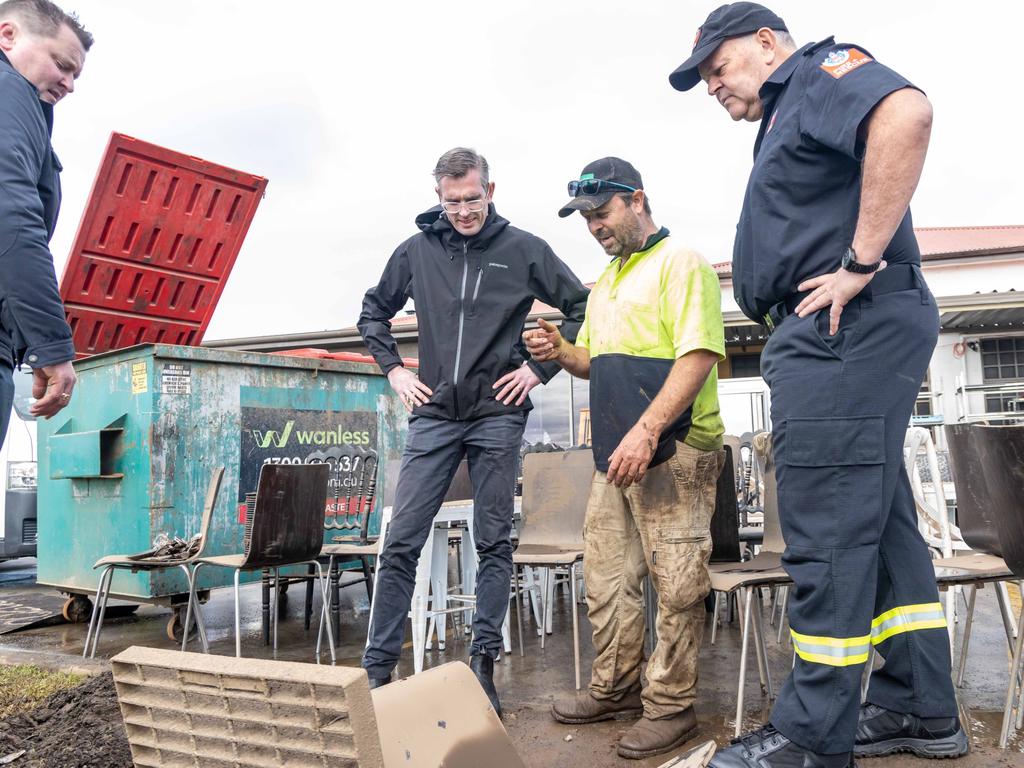NSW flood buybacks ‘to cost billions’
Thousands of residents may be able to sell their homes to the government after a report into the catastrophic 2022 floods.

Thousands of flood-affected residents across NSW may be able to sell their homes to the government after a landmark report into the catastrophic 2022 floods recommended a buyback program of private property on flood plains, with the cost to taxpayers likely to run into the tens of billions of dollars.
Five months after they were commissioned by NSW Premier Dominic Perrottet, Mick Fuller and Mary O’Kane handed down a 700-plus-page report offering a scathing criticism of the state’s emergency response agencies, while outlining 28 recommendations to ensure NSW was better prepared for future flooding events.
One key recommendation called for reconceiving flood plains as public assets, urging the NSW government to iteratively buy flood-threatened properties, converting private residences and businesses into community-based areas that were “productive and minimise risk to life”.
“Government should progressively move flood-plain ownership to government leasehold, with lessees using the land under appropriately specified conditions,” the report recommended.
Mr Perrottet announced flood-affected residents of Lismore would be able to register for a buyback scheme by the end of August, with a program in place before the end of the year.
“The power of nature to swamp the beautiful Northern Rivers was devastating and that will be matched by our commitment and dedication to rebuild and recreate our communities for the future.
‘That will not happen overnight,” Mr Perrottet said in Lismore. “It’s a long journey that is in front of us.”
As he acknowledged the cost of any buyback and land swap program was likely to be in the “billions and billions of dollars”, adding to the $6.5bn already spent by taxpayers on the recovery bill, Mr Perrottet said he had already turned to the Albanese government for financial support.
But with 88,000 evacuation-threatened residents already living on the Hawkesbury-Nepean Valley flood plain, in Sydney’s west, development plans by the NSW government could see that figure reach 135,000 by 2041 (based on a one-in-500-year flood level).
A case study encompassed in the broader report noted the “single biggest driver of flood risk” in the valley was development on the flood plain, calling for stronger planning controls.
In late February, swaths of the northeast NSW and southeast Queensland were hammered by unprecedented rains, with the Wilsons River in Lismore peaking at 14.4m on February 28, more than 2m higher than the record.
More than 10,000 homes across the Northern Rivers region were damaged by record flood levels, with 4055 properties deemed uninhabitable, making it the costliest flood in Australian history. Nine people lost their lives in the flooding events.
Released on Wednesday morning, the report offered a stinging criticism of the NSW State Emergency Service and Resilience NSW, established in 2019, finding the former failed to use available resources or current emergency management arrangements.
The inquiry found a “majority of submissions” were critical of Resilience NSW, headed by Black Summer bushfires hero Shane Fitzsimmons, noting its slowness and unresponsiveness “exacerbated the stresses resulting from the disaster”.
The organisation would be “transformed” into a “leaner, nimble agency” called Recovery NSW, with Mr Fitzsimmons likely to be dumped as commissioner.
Parts of the SES would be merged with the Rural Fire Service to allow the rescue service to benefit from superior administrative and backroom capabilities.
The lion-hearted response of volunteering communities, like the “tinnie army” in the Northern Rivers, needed to be built upon, the flood inquiry said, calling for a community first responders program to be established, allowing for combat and government agencies to provide training.
Insurance Council of Australia chief executive Andrew Hall said the inquiry’s flood plain recommendation was a “good one”, and went to the need for the government to think about the land use problem “holistically”.
Any buyback program, he said, needed to begin with the most vulnerable and most at-risk.







To join the conversation, please log in. Don't have an account? Register
Join the conversation, you are commenting as Logout